Can't figure out your use case but i think file code should help
columns=['cat1','cat2','cat3','cat4','cat5','cat6','cat7','cat8','cat9','cat10']
df = pd.DataFrame([[2,2,6,9,7,6,2,9,7,11]],columns=columns )
grouped_cats = {}
for i,val in enumerate(df.iloc[0]):
if val in grouped_cats:
grouped_cats[val].append(columns[i])
else:
grouped_cats[val]= [columns[i]]
Output = {2: ['cat1', 'cat2', 'cat7'], 6: ['cat3', 'cat6'], 9:
['cat4', 'cat8'], 7: ['cat5', 'cat9'], 11: ['cat10']}
The easiest way of visualisation that i can think of is
import matplotlib.pyplot as plt
colours = ['green', 'orange', 'red','blue','black']
cluster = {2: ['cat1', 'cat2', 'cat7'],
6: ['cat3', 'cat6'],
9: ['cat4', 'cat8'],
7: ['cat5', 'cat9'],
11: ['cat10']}
fig = plt.figure()
ax = fig.add_subplot(111)
ax.set_xticks([i for i in range(2,12)] )
for colour, (x, ys) in zip(colours, cluster.items()):
ax.scatter([x] * len(ys), ys, c=colour, linewidth=0, s=50)
plt.show()
Another way to visualise is for each of the unique values in your data, count the number of labels associated and plot the scatter plot for annotate with class names.
import matplotlib.pyplot as plt
colours = ['green', 'orange', 'red','blue','black']
cluster = {2: ['c1', 'c2', 'c7'],
6: ['c3', 'c6'],
9: ['c4', 'c8'],
7: ['c5', 'c9'],
11: ['c10']}
z = [len(cluster[ke]) for ke in cluster ]
y = [ke for ke in cluster ]
fig, ax = plt.subplots()
ax.set_xticks([i for i in range(2,12)] )
ax.scatter(y, z, c=colours)
for i,val in enumerate(cluster):
ax.annotate(','.join(cluster[val]), (y[i], z[i]))




